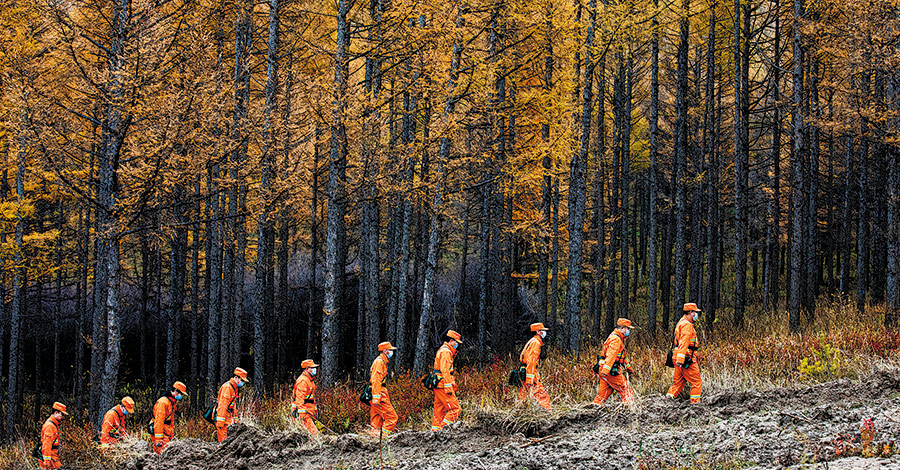
Staff from the Saihanba Forest Fire Brigade patrol the forest. [Photo by WANG WEIWEI/FOR CHINA DAILY]
In 59 years, the people of Saihanba have created the miracle of "daring to challenge the heaven and earth"; in 59 years, the people of Saihanba have interpreted by their practical actions the development concept of "lucid waters and lush mountains are invaluable assets"; in 59 years, the people of Saihanba have been forging the spirit of "staying true to our original aspiration and founding mission, and working hard to improve the environment".
In October, the cold wind blowing from Siberia has dyed Saihanba golden.
From Beijing, more than 400 kilometers away, all the way up north, the temperature gradually drops, and the scenery outside the car window is constantly changing.
Houses scattered randomly along the road are left behind, and the larch in the mountains tries to become active protagonist. With the continuous changes of road signs and the emergence of fire prevention warnings, Saihanba, known as the "miracle on earth", begins to come into view.
In Mongolian, Saihanba means beautiful high mountains.
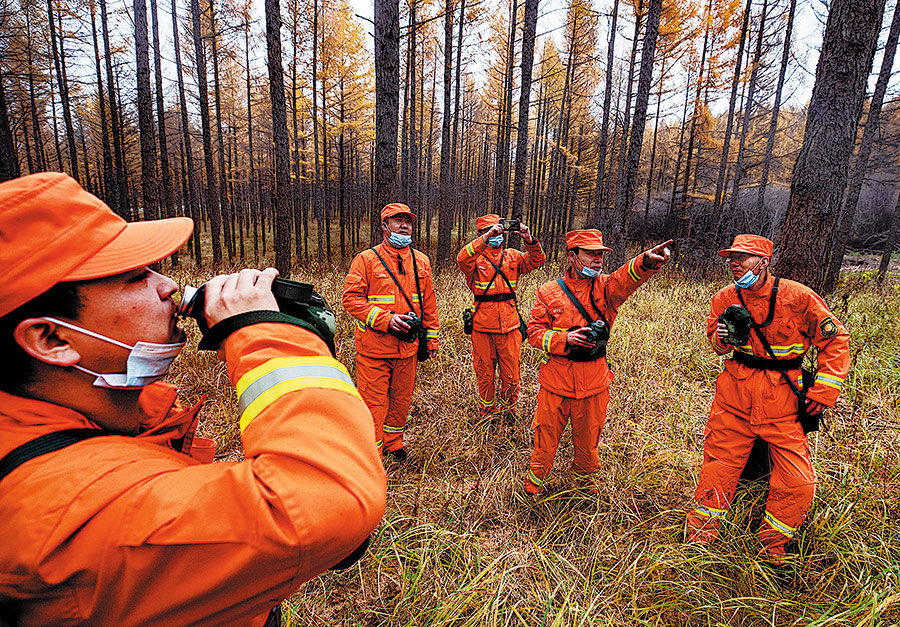
In order to ensure the safety of the forest farm, veterans set up the fire brigade in 2002. [Photo by WANG WEIWEI/FOR CHINA DAILY]
However, Saihanba was a wasteland of "yellow sand covering the sky and flying birds without inhabiting trees" 59 years ago. Whenever the north wind blows, the windy sand located in Hunshandak Sand Land in Inner Mongolia will drive southward, passing Saihanba and reaching Beijing and Tianjin.
Nowadays, people who have come to Saihanba can hardly imagine the arid scene. Occasionally, a gust of wind passes by, and they would just sigh and shout how strong the wind is, but they would not feel sandblasted.
On Oct 9, watchmen Liu Jun and Wang Juan were observing the surrounding forest area on a watchtower in Saihanba Forest Farm in Hebei province. Liu is in charge of the observation, the other keeps recording, and the event log is reported every 15 minutes.
"Spring and autumn are the critical fire prevention periods for our forest farm. We need to stay here for three months, have three meals a day, work and live in the building," says Liu Jun, who has been engaged in observation for 13 years. Simple as it looks, the job is quite the burden on their shoulders. Only by enjoying loneliness can they keep this forest safe and sound.

Farm staff measure the work area to ensure construction quality. [Photo by WANG WEIWEI/FOR CHINA DAILY]
In order to protect the forest, the couple have to live apart from their family. They only had one parent conference for their daughter between her elementary school years and university graduation. Whenever he mentions her daughter, Liu always feels indebted. They value the forest more than anything else. "Fire prevention is our priority. Only by protecting this place can we be worthy of the trees planted by the predecessors,"Liu says.
Since the establishment of the forest farm, more than 20 couples have guarded the watchtower, and there has been no fire reported in the farm.
After more than half a century of development, Saihanba today is not only a "green Great Wall" for windbreak and sand fixation, but also a timber source for wood processing enterprises.

After the porter has placed the logs according to standards, Song Shuyan counts the number. [Photo by WANG WEIWEI/FOR CHINA DAILY]
Many people would doubt why the trees that have grown up here are to be felled in a planned way. A staff member of the farm explains that forest protection is not "just planting without cutting". Most of the trees here are planted forest, and the forest species are relatively single, unlike natural forests that can adapt on their own and survive the fittest. The selective cutting of plantation forests is more like thinning when farmers plant crops. Only in this way can the nutrient area be expanded and diseased plants can also be removed to ensure the healthy development of the forest areas.
Although selective logging has benefits, the people of Saihanba do not value immediate benefits. They have set their sights on decades later. The current income is not a priority of magnitude compared with the ecological benefits generated in the future.
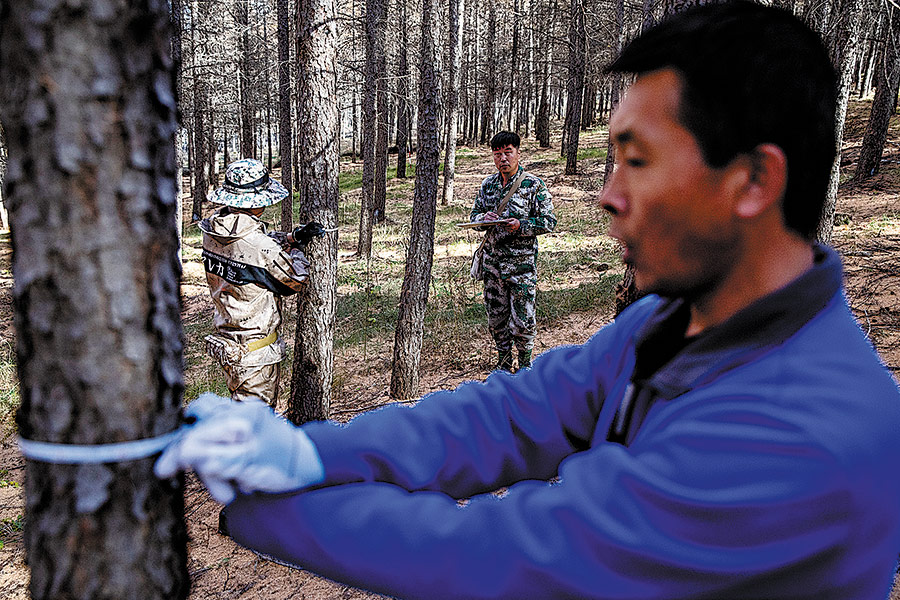
Staff measure the diameter of each tree in the sample square. [Photo by WANG WEIWEI/FOR CHINA DAILY]
The ecological benefits have already reaped a reward in Saihanba today.
The 53-year-old Lyu Zhenjun has worked in Saihanba for more than 30 years. "When I first came to work here, I slept on a heatable brick bed. Except for the forest farmworkers, there were few outsiders all year round. But now, on holidays, there are tourists from other provinces. Farmers and herdsmen offer small bed-and-breakfast services with more money in their pockets," he says.
Saihanba's success has allowed this "miracle on earth" to be replicated across the country. The construction of the "three more Saihanba" project launched in 1999 has already seen green barriers built in Chengde Yudaokou, Qiansongba, and Zhangjiakou Saibei, effectively preventing sand and dust in Hunshandak Sand Land from going south.
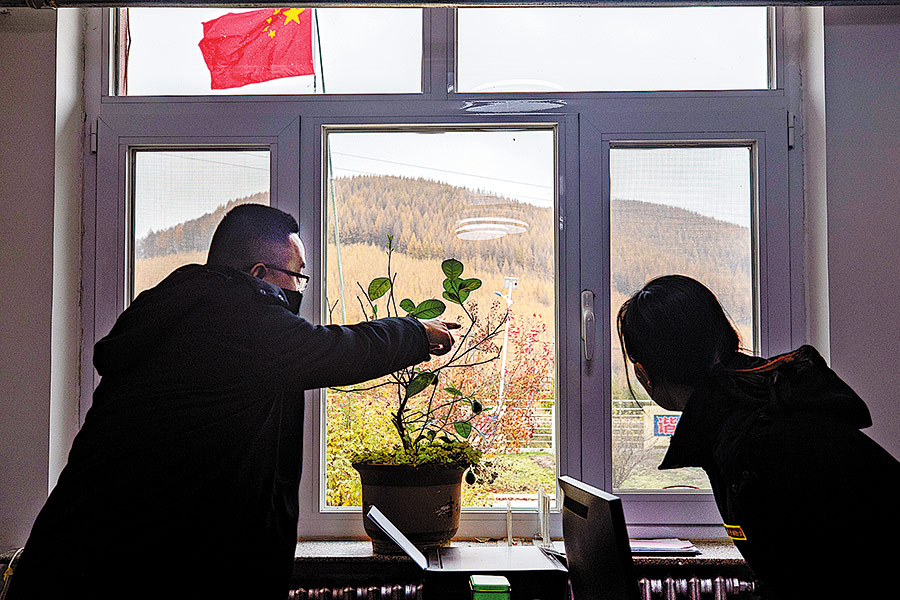
Wu Chengang (left) assigns work to Xu Ying, who is about to carry out the patrol. [Photo by WANG WEIWEI/FOR CHINA DAILY]
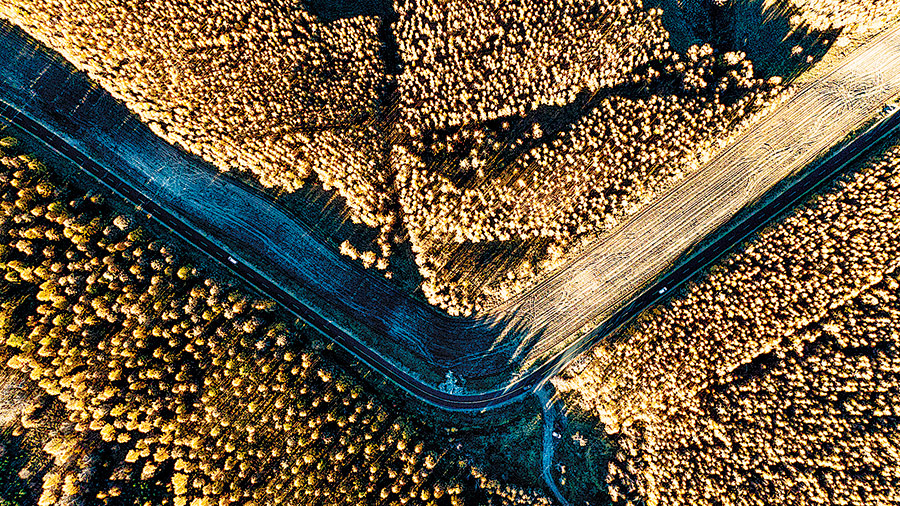
In Mongolian, Saihanba means beautiful high mountains. [Photo by WANG WEIWEI/FOR CHINA DAILY]

A researcher analyzes measurements of the sample. [Photo by WANG WEIWEI/FOR CHINA DAILY]

